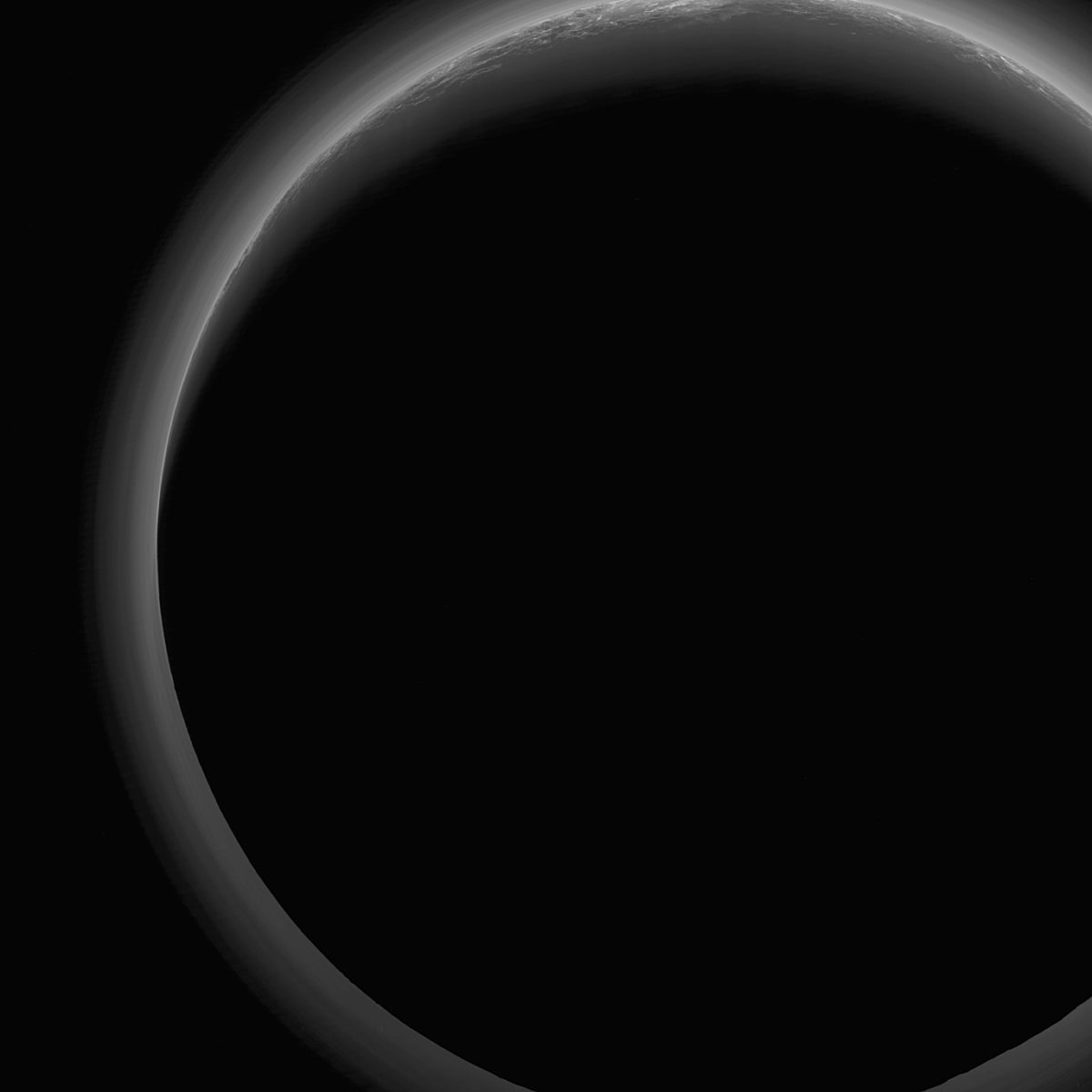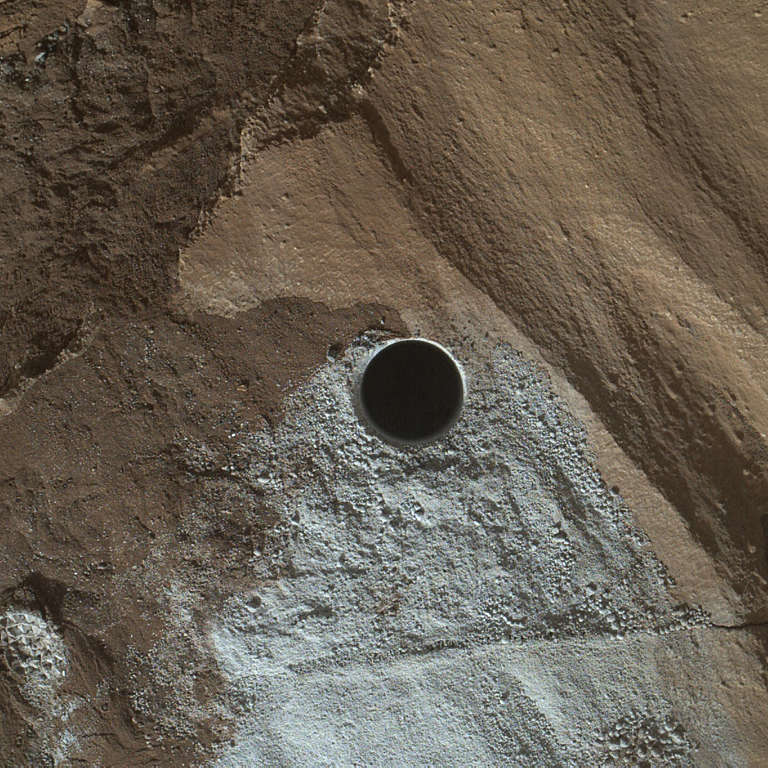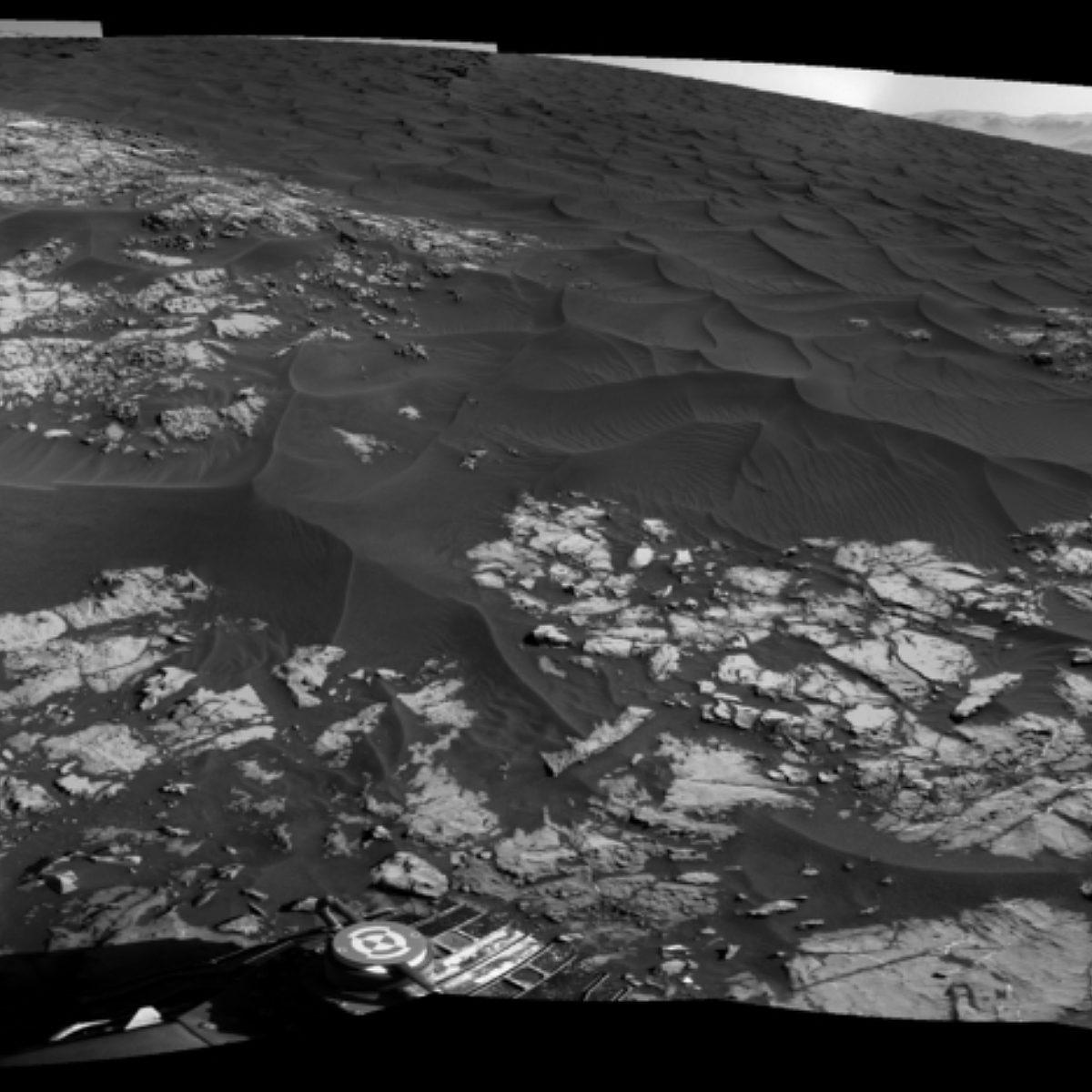All
All
Stories, updates, insights, and original analysis from The Planetary Society.
MAVEN dodges Phobos, with (maybe) a little help from Curiosity
This week MAVEN had to execute a short rocket burn in order to prevent a future collision with Phobos. Curiosity (and other rovers) may have played a role in those trajectory predictions.
Curiosity update, sols 1548-1599: Serious drill brake problem as Curiosity drives through Murray red beds
Since my last update, the Curiosity mission has developed a better understanding of the problem that prevented them from drilling at Precipice, but its intermittent nature has slowed the development of a workable solution that will allow them to use the drill again. In the meantime, the rover has driven onward, making good use of its other instruments.
Curiosity update, sols 1489-1547: Drilling at Sebina, driving up through Murray, drill problems at Precipice
It's been a drive-heavy two months for Curiosity. Since my last update, the rover has drilled at a site named Sebina, then traveled about 500 meters to the south across increasingly chunky-looking Murray rocks to a new attempted drill site at Precipice. They were planning to attempt a new drilling technique at Precipice, but encountered a new problem with the drill instead.
Curiosity Update, sols 1428-1488: Through the Murray Buttes, drilling at Quela, and beyond
In the two months since my last Curiosity update, the rover has traversed the scenic Murray Buttes, drilled at Quela, and driven another 300 meters southward.
How big is that butte?
Whenever I share images from Curiosity, among the most common questions I’m asked is “what is the scale of this image?” With help from imaging enthusiast Seán Doran, I can answer that question for some of the Murray buttes.
Curiosity update, sols 1373-1427: Driving up to Murray buttes, drilling at Marimba
Curiosity has now covered most of the flat ground that lay between the Naukluft plateau and the Murray buttes. The mission took only 11 days to complete drilling work at Marimba, despite a recurrence of a problematic short in the drill. The rover is ready to drive in among the buttes, shooting spectacular photos along the way.
What's up in the solar system, July 2016 edition: Juno to enter orbit, NASA missions all extended
Highlights this month include the impending arrival of Juno at Jupiter, the approval of extended missions for all of NASA's solar system spacecraft, and public data releases from Rosetta, New Horizons, and Cassini.
Curiosity update, sols 1311-1369: Drilling at Lubango, Okoruso, and Oudam, and a turn to the south
Curiosity is at a turning point in its mission to Mount Sharp, both literally and figuratively. Having drilled at three sample sites in 7 weeks, the rover took a left turn, changing its trajectory from a generally westward driving path to a southward one. It is now poised to cross the Bagnold dune field at Murray buttes.
Quick Curiosity update, sol 1320: "Lubango," the 10th drill site on Mars
Curiosity has drilled into Mars for the 10th time at a site named Lubango, on sol 1320 (April 23, 2016). Lubango is in a bright-toned halo around a crack in the Stimson sandstone unit on the western edge of the Naukluft Plateau.
Moonset over Mars
Enjoy this serene image of a moonset on another world, captured by Curiosity's Mastcam in April 2014 and processed here by Justin Cowart.
Curiosity update, sols 1250-1310: Across the Naukluft Plateau
Curiosity has driven onward from Namib dune across a highstanding unit of rock called the Naukluft Plateau. Despite some frustrating sols lost to a short circuit in the RTG and DSN troubles, the rover has made progress, and performed lots of 3D imaging of weirdly wind-eroded rocks.
LPSC 2016: Martian Geomorphology
Scientists showcased a wide range of features and processes on Mars' surface at last week's Lunar and Planetary Science Conference.
A Sunset on Mars: Crafting a scene from archival data
Ever wanted to stand on Mars and watch a sunset? Unfortunately for many of us, it will never be something that we get to experience in person. But thanks to our robotic emissaries on Mars, and some careful processing of images from NASA's Planetary Data System, we can get a sense of what it’s like.
Curiosity Rover: Design, Planning, and Field Geology on Mars
Emily is back to work on her Mars Science Laboratory book, which has a new publication date and a new title.
Light plays on a Martian crater rim
Recently, space image processing enthusiast Thomas Appéré noticed that Curiosity had taken five photos of exactly the same spot on the rim of Gale crater, identical but for being taken at different times of day. That spot was due north of the rover, so the rising and lowering Sun illuminates the rounded hummocks of the crater rim differently from early morning to early afternoon.
Curiosity update, sols 1218-1249: Digging in the sand at Bagnold Dunes
Curiosity has spent the last month sampling and processing dark sand scooped from the side of Namib Dune. The rover has now departed Namib and is preparing to cross the Bagnold dune field, while working to diagnose an anomaly with the CHIMRA sample handling mechanism.
HiRISE image coverage of the Curiosity field site on Mars, Version 3.0
There have been tons and tons of HiRISE images of the Curiosity landing region, and it has taken quite a lot of work for me to find, locate, and catalogue them. This post is a summary of what I've found; after five revisions and updates, it's now version 3.0 of the list.
Curiosity update, sols 1166-1217: First reconnaissance of Bagnold dunes
In the six weeks since my last detailed Curiosity update, the rover has driven to, on, and around a couple of active barchan sand dunes on Mars. They are now searching for a site to scoop and sample sand on the western edge of Namib dune.
For the first time ever, a Curiosity Mastcam self-portrait from Mars
In a remarkable and wholly unexpected gift to Curiosity fans, the rover has just taken the first-ever color Mastcam self-portrait from Mars.
Curiosity stories from AGU: The fortuitous find of a puzzling mineral on Mars, and a gap in Gale's history
Yesterday at the American Geophysical Union meeting, the Curiosity science team announced the discovery of a mineral never before found on Mars. The finding was the result of a fortuitous series of events, but as long as Curiosity's instruments continue to function well, it's the kind of discovery that Curiosity should now be able to repeat.


 Explore Worlds
Explore Worlds Find Life
Find Life Defend Earth
Defend Earth


 Sun
Sun Mercury
Mercury Venus
Venus Earth
Earth Mars
Mars Jupiter
Jupiter Saturn
Saturn Uranus
Uranus Neptune
Neptune Small Bodies
Small Bodies


















